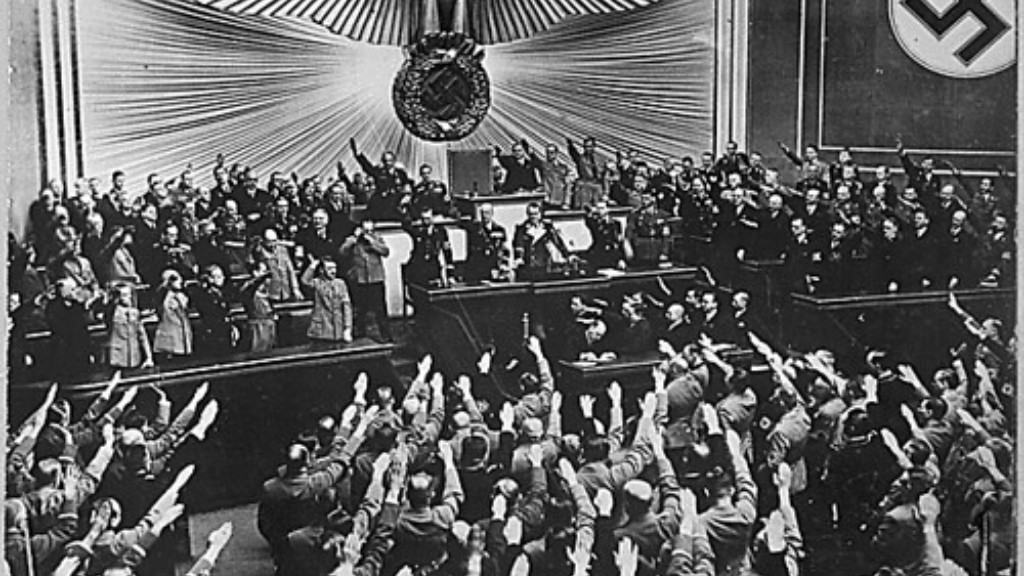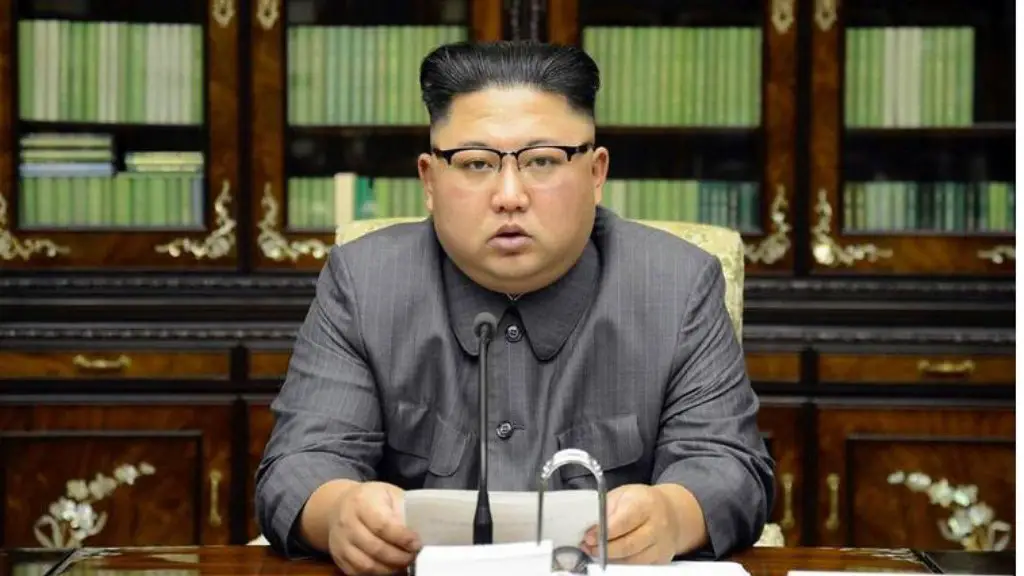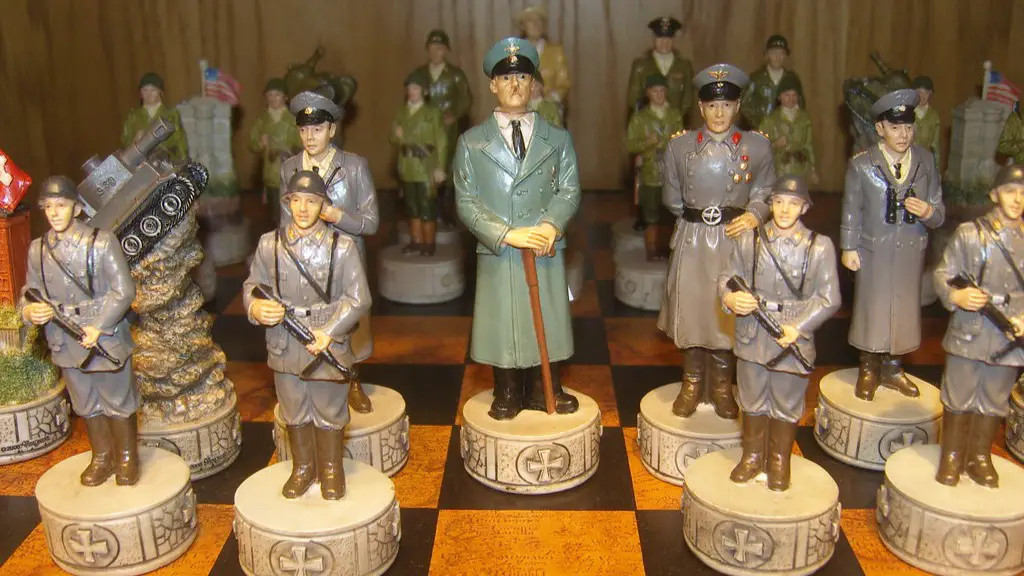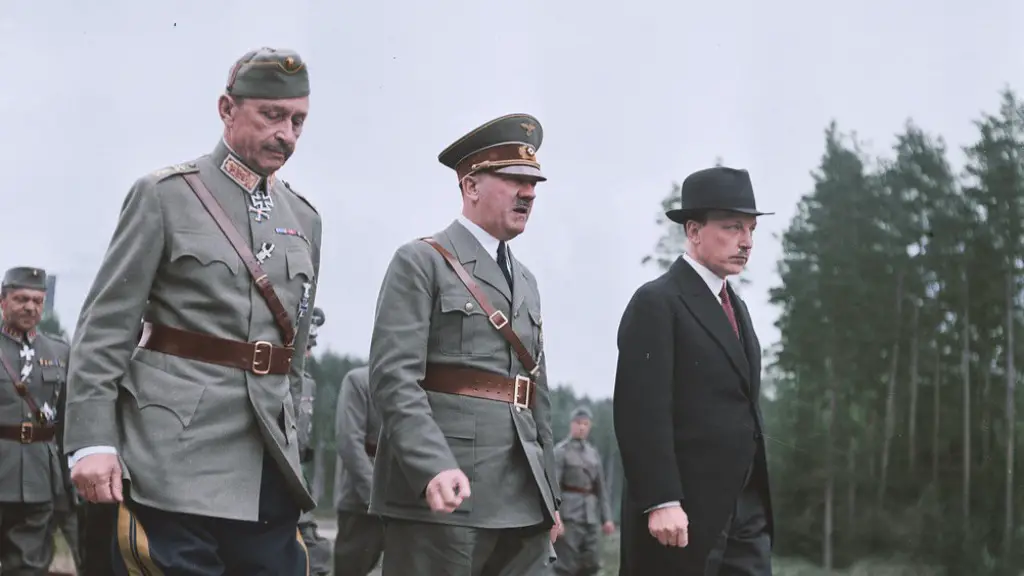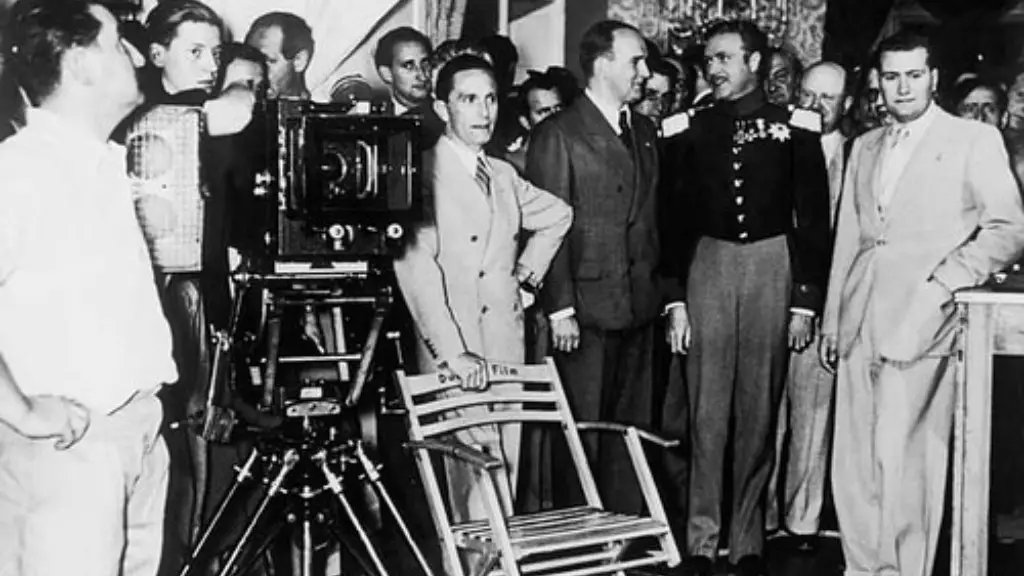Adolf Hitler and the Nazi Party rose to power in Germany during the early 1930s. After being appointed Chancellor in 1933, Hitler rapidly transformed Germany into a totalitarian dictatorship. By the end of the decade, the Nazis had complete control over the country. In January 1933, Hitler was appointed Chancellor of Germany. The Nazis quickly began to consolidate their power. Within a month, they had passed a series of laws that effectively dismantled German democracy. The Nazis also began to persecute minorities, especially Jews. In September 1935, the Nuremberg Laws were passed, which stripped Jews of their citizenship and made it illegal for them to marry or have sexual relations with non-Jews. By the end of the 1930s, the Nazis had complete control of Germany. Hitler’s totalitarian dictatorship had begun.
Adolf Hitler and the Nazi Party rose to power in Germany during the early 1930s through a number of events:
The Great Depression: The economic crisis that began in 1929 had a profound and traumatic effect on German society. The result was mass unemployment, widespread poverty and hunger, and a deep sense of despair and hopelessness. Into this environment stepped Adolf Hitler and the Nazi Party, who promised to make Germany great again and to restore the country to its former glory.
The failure of democracy: The Weimar Republic, which was founded in 1918 after Germany’s defeat in World War I, was a democratically-elected government. However, it was plagued by economic and political problems, and many Germans came to believe that democracy was not working. This gave Hitler and the Nazis an opportunity to gain support by promising to fix the country’s problems.
The rise of right-wing extremism: In the 1920s, a number of right-wing extremist groups emerged in Germany, including the Nazis. These groups were anti-democratic, anti-Semitic, and anti-communist, and they advocated for a return to traditional values. Hitler and the Nazis were able to capitalise on this rising tide of extremism to gain support and power.
How did Germany become so powerful in ww2?
The Blitzkrieg tactics used by Germany during World War II were incredibly effective in allowing the country to conquer much of Europe in a short amount of time. This was possible due to the concentration of powerful weapons along a narrow front, which allowed for quick advances and overwhelming defeats of enemy forces. While Blitzkrieg was ultimately unsuccessful in allowing Germany to win the war, it was a very effective tactic during the early stages of the conflict.
The country’s standard of living has improved slowly but steadily over the past few years, due in part to the export of local products, the reduction in unemployment, increased food production, and reduced black market activity. These positive trends are likely to continue in the coming years, which should help improve the quality of life for all citizens.
What caused Germany to end the war
The Allied delegation, led by Supreme Allied Commander Marshal Ferdinand Foch, largely ignored United States President Woodrow Wilson’s Fourteen Points for Peace and left no room for negotiation. The German Army’s imminent collapse led Germany to pursue an armistice. Foch’s Allied delegation demanded unconditional surrender, which led to the Treaty of Versailles and the Treaty of Trianon.
The Generalplan Ost was the Nazi German government’s plan for the genocide and ethnic cleansing on a vast scale, and colonization of Central and Eastern Europe by Germans. The plan entailed the forcible relocation of millions of Slavic people from their homes in Eastern Europe to make way for German settlers. The plan also called for the enslavement and extermination of millions of others, including Jews, Romani people, communists, and homosexuals. The Generalplan Ost was never fully implemented, due to the onset of World War II, but it served as a blueprint for the atrocities that were carried out during the war.
What country is the strongest in ww2?
The Allies were clearly superior in terms of industrial resources, population, and military manpower in September 1939. However, the German Army was the most efficient and effective fighting force due to its armament, training, doctrine, discipline, and fighting spirit.
The leading role occupied by the United States following World War II grew through the creation of the United Nations in 1945. The IMF would oversee the maintenance of this new global economic system, and the United States and the dollar emerged as the economic standard bearers for the postwar world. This position was solidified through the Bretton Woods Agreement of 1944, which pegged global currencies to the dollar and established the dollar as the world’s reserve currency. The United States used its economic might to rebuild Europe and Japan through the Marshall Plan, and also helped to create the World Bank and the International Monetary Fund.
What was Germany’s biggest mistake in ww2?
There are many reasons why Hitler’s invasion of the Soviet Union can be considered his greatest mistake. Firstly, it was a complete reversal of the Nazi-Soviet pact that had been signed just two years prior. This not only caught the Soviet Union off guard, but also alienated Germany’s previous ally, Italy. Secondly, the complete lack of preparedness for the bitter winter conditions in the USSR led to complete disaster for the German army, with over two million soldiers dying in the first few months of the campaign. Finally, the vast size of the Soviet Union meant that even if the German army had been successful in conquering it, holding onto such a large territory would have been impossible.
Germany has paid out billions of euros in reparations to Holocaust survivors and their families. These payments have been made to both Western and Eastern countries, as well as to the Jewish Claims Conference and the World Jewish Congress. To date, approximately 63 billion euros have been paid out, with more expected to be paid in the future. These reparations are a vital part of ensuring that the victims of the Holocaust are compensated for their losses.
Did Germany take the blame for ww2
The Treaty of Versailles was a peace agreement that ended the First World War. The treaty forced Germany to accept responsibility for the war and to pay reparations to the Allies. The treaty also created the League of Nations, an international organization designed to prevent future wars.
The revelation of the Zimmermann telegram was a huge turning point in public opinion in the United States. Prior to its release, many Americans were still on the fence about whether or not to enter the war. But when they found out that Germany was actively trying to encourage Mexico to attack America, they were incensed. This, coupled with Germany’s resumed submarine attacks, was enough to push the United States over the edge and into the war.
Who defeated Germany in ww2?
The Soviet Union played a critical role in the defeat of Nazi Germany in World War II. In May 1945, the Red Army captured Berlin, the final step in defeating the Third Reich. The Soviet Union suffered the most casualties of any nation in the war, but their sacrifices were instrumental in defeating the Nazis.
A divided Germany was the result of the Potsdam conference in which the allies decided to occupy the country in the aftermath of World War II. The four zones were occupied by Great Britain, France, the United States, and the Soviet Union. Berlin, the capital city, was also divided into four occupied zones. This division of Germany led to economic, political, and social differences between the East and West, culminating in the construction of the Berlin Wall in 1961.
Who was Hitler’s best friend
August Kubizek was a close friend of Adolf Hitler and is best known for his association with the future German leader. Kubizek met Hitler in 1904 and the two soon became inseparable, with Kubizek acting as a mentor and sounding board for Hitler’s ideas. The two parted ways in 1908, but remained in touch throughout their lives. Kubizek passed away in 1956 at the age of 68.
Some estimates of the number of people killed during World War II range from as low as 35 million to as high as 60 million. This is a significant difference, because it is difficult to know exactly how many people were killed during the war. Statistics on war casualties are often inexact, so it is hard to say for sure how many people died during the conflict.
What was Germany’s plan for Russia?
Adolf Hitler’s Lebensraum policy, expressed in Mein Kampf, was to dispossess the Russian inhabitants – as was to happen with other Slavs in Poland and most of Eastern Europe- and to either expel most of them beyond the Ural mountains or to exterminate them by various means. This policy was one of the main reasons for the outbreak of World War II, as it led to the German invasion of the Soviet Union in 1941.
The Japanese Constitution outlines several pacifist principles in Article 9. This article renounces Japan’s right to declare war or use force as a means of settling international disputes. Additionally, Article 9 limits Japan’s military to self-defense only. These pacifist principles were put in place after World War II in an effort to prevent Japan from ever again becoming a militaristic power. Despite these constitutional limitations, Japan does maintain a large and modern military force. This force is only to be used for self-defense and is not allowed to be used for offensive purposes.
Warp Up
Adolf Hitler took over Germany in 1933 after he was appointed Chancellor by President Paul von Hindenburg. Hitler’s rise to power was rapid and his popularity soon soared after he announced a series of economic and social reforms that were designed to improve the lives of German citizens. However, Hitler’s true intentions were not purely altruistic and he soon began to consolidate power and exercise dictatorial control over the country. Through a combination of blackmail, threats, and violence, Hitler was able to gain control of all aspects of German society and establish the Nazi dictatorship.
Adolf Hitler was a master propagandist who was able to take advantage of the power of government to effectively control the German people. After becoming Chancellor in 1933, he used his position to consolidate power and create a totalitarian state. Through a mix of terror and manipulation, Hitler was able to maintain control of Germany until his eventual downfall in 1945.
